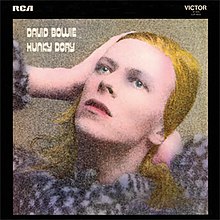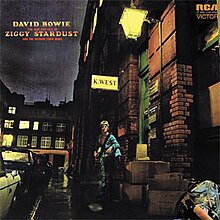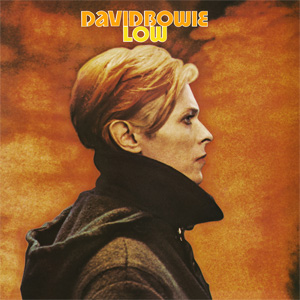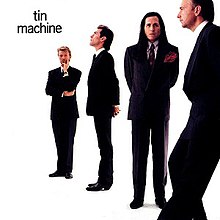Rock stars seem to be dropping like flies lately. In reality, important rock personages have been shuffling off the mortal coil since the trifecta of Hendrix, Joplin and Morrison all pulled the curtain closed at age 27. But the one-two whammy of Lemmy and Bowie in under two weeks has left the rock world reeling. That the both of them died less than a week after their birthdays only adds an eeriness to the tale. Lemmy was the one that really hit hard, for many folks thought they had a bead on Lemmy-everyone’s fabled disreputable but lovable uncle. (just keep him away from your little sister and the liquor cabinet). But David Bowie was more enigmatic. Able to shed personalities like a snake shedding skins, the real David Bowie was very hard to pin down. The question is, did a real David Bowie exist under all those layers? Let’s see:
Which One Is Davy Jones?


Sometimes there’s just not enough room for two people in one place. Davy Jones and the Manish Boys were on track under Shel Talmy’s (the Who) guidance towards success-singles and selected high exposure gigs. Things weren’t perfect, but then in 1966 something happened, a US television show. Perhaps the meteoric rise of the Monkees in 1966 caught everyone unaware. But as Bowie wrote to an American fan in 1967: “In answer to your questions, my real name is David Jones and I don’t have to tell you why I changed it” ‘Nobody’s going to make a monkey out of you’ said Bowie’s manager. The name change to David Bowie was necessary. (Of note is his 1965 encounter with session guitarist Jimmy Page. Jones/Bowie grabbed an unused riff from Page that he held on to for the perfect moment, resurfacing five years later on The Man Who Sold the World as The Supermen).
Glamming on to a Trend

Alice David
The glam movement was just getting started in the late 60’s. Guys started wearing make up and dresses, dropped hints that they might be gay, strapped on guitars, and rocked out. An early pioneer, Alice Cooper (first the name of a band, then later the name of the singer) had workshopped the ‘guy pretending to be a girl thing’. In Britain, homosexuality was becoming popular (it had been illegal in that country until 1967). Though it took until 1972 for him to declare himself gay (possibly a publicity stunt to promote the bisexual character Ziggy Stardust that was his persona for the next two years), he embraced the controversy and the ink it generated in the music press. Regardless, the androgynous Bowie character went huge. Starting with the hugely influential Space Oddity single (which seems to have drastically higher production value than the rest of the LP, indications of the need to get an album out quickly), Bowie seemed to have the grand plan already in mind-space themes and dystopia with a hint of hippy pop. The follow up, 1970’s The Man Who Sold the World found Bowie hitting a rough but powerful outline of what was to come next, with three quarters of the future Spiders already in place. Width of a Circle is a good picture of the imminent future, and a dystopian party it was going to be. The musicianship of the Spiders From Mars band-Mick Ronson, Woody Woodmansey and Trevor Bolder had a lot to do with this incarnation becoming the real life version of the fantasy. The combination of Bowie and Ronson was unbeatable at the time for spinning out anthem after anthem. 1971’s Hunky Dory brought in fans drawn to this guy who might be a hippy (Glastonbury Fayre appearance), might be a faux stoner trying to be cool (Davy Jones background), might be some half-alien spacerocker trying to get a cult together? The latter choice was closest to the truth. But fans gathered to the freak flag Bowie was flying, and the party was about to begin in earnest. The stage was ready for The Rise and Fall of Ziggy Stardust and the Spiders From Mars, Bowie’s acknowledged masterpiece. A loose rock opera of sorts, it is a dystopian tale with a hint of 60’s utopian optimism. Everyone should own this record.(The fictional glam alien pop star Ziggy that takes the world over was supposedly based on the name and persona of the over the top persona and groundbreaking ambiguous sexuality of Iggy Pop).
“Well the bitter comes out better on a stolen guitar
You’re the blessed, we’re the Spiders from Mars”
Ziggy drew huge crowds wherever he went. Arenas and halls filled up across the Europe, America, Japan and of course, the UK. They played 174 shows from February 1972 to July 1973. They had conquered the world in fashion akin to what was accomplished recently by Led Zeppelin. This was far more than just a band-the whole trip promised was a lifestyle that fans wondering where the promise of the festival generation had gone had been waiting for- a glass asylum with just a hint of mayhem. The hippies, the glam kids, the new pill druggies, the sci-fi futurists–the optimists and pessimists of the post commune era had been searching for something to fill this unfulfilled dream. This was a utopia of sex, drugs and rock n roll as a way of living. Not a cliche, but a real outlet from reality that you could stay in permanently, with Ziggy as their leader. Ziggy was becoming a reality, the messiah that was only words scrawled into an album coming to life-a real cult leader with a real cult following. But it wasn’t really clear where Ziggy started and Bowie ended. They started to fuse into one personality, which in a haze of drugs and decadence, must have been a little concerning. When Bowie announced his retirement live in concert, there were gasps of disbelief in the crowd. Fans were aghast that he had taken off the Ziggy persona like a cheap Halloween costume and crumpled it in the corner, ending their dreams.



 US original cover and 1972 reissue
US original cover and 1972 reissue



A Lad Insane?
You’d have to be nuts to walk away from the fame (and cash) that Ziggy brought in. His retirement? A publicity stunt. You see, only Ziggy was retiring, not David. Bowie’s next tweak wasn’t that radical. Aladdin Sane was huge in America, and those that missed the Spiders From Mars tour were sure not to miss this one. The next two albums did not stray too far from home. The lightning bolt became his icon, and glam burst full force in America, spawning bands from the New York Dolls to Kiss, signaling even the early Ramones to put on make up, wear dresses, act gay, and hope to get famous.


His decision on Diamond Dogs to not have a star guitarist in the band, and hold down guitar duties on his own was a hubris motivated mistake. His limited skills on guitar held back some fairly impressive songs from becoming full blown rock legends. Still, this album ranks as one of his best, and is the last in the trio that started with Ziggy. Rock n Roll was about to run its course for Bowie. The three album arc for an invented personality though? This was a format to stay on. (Many Bowie fans point to these three albums as the essential Bowie, a point I essentially agree with).
Blue and Green Eyed Soul
Bowie’s next move puzzled many. Gone were the dresses, the futuristic sci-fi costumes, the make up, the platform shoes-the whole thing. Many fans were crushed when Bowie became the Thin White Duke: a cigarette smoking, smoky eyed soul singer. Demure zoot suit era costumes were modernized to fit in with his new ‘cool persona’ . 1975’s Young Americans kicked this off. R n B and Philadelphia soul? A natural for a skinny white boy from Brixton, right? Soul was huge in America, and though he had a solid fan base, radio hadn’t caught on until Young Americans. Station to Station continued the run, and the Ziggy kids were perplexed and pissed, feeling ditched by their hero who had laid out the blueprint of a whole lifestyle. Fame and Young Americans had supplanted the alien pied piper. Carlos Alomar came on as guitarist, but couldn’t get the things out of Bowie that Ronson could. Never again would Bowie have a muse like Mick Ronson.



Nothing says soul like being surrounded by black people, and his appearance on Soul Train either validates his new persona or is uncomfortable in the extreme. Perhaps a little bit of both?
Krautrock Here We Come
The next trio of albums was started in Berlin. Krautrock had been noticed throughout Europe, and the flamboyant and odd Amon Duul II and equally strange Faust had left the playing field to the instrumentalists. Bands like Cluster, Harmonia, Can, Kraftwerk (see V2 Schneider from Heroes), la Dusseldorf and Tangerine Dream had been left standing. Mostly instrumental, these bands had created a sound-they were stark and brooding-and ambient. Bowie saw and Bowie liked. He contacted ambient music pioneer Brian Eno to come to Berlin and absorb the vibes of a dark and brooding city, and make some music. Eno was essential to this new sound, and the new image-part performance art, part disaffected rock star, part coke head trying to kick a nasty habit. Many Bowie fans point to the trilogy of Low, Heroes and Lodger as his peak period, and perhaps the only view of the ‘real’ Bowie he allowed us to see.



Scary MTV Monsters
The follow up to Lodger didn’t exactly light up the charts-it was a frightening thought to have a 1980’s Bowie for many. Robert Fripp and the then new instrument guitar synthesizer played by Chuck Hammer tried to fill the gaping hole left by Eno’s departure. It spawned the classic tune Fashion, but others noticed the album was filled with references from his past, especially an update on Major Tom.
A three year layoff and a huge new record contract with EMI (as he jumped ship from RCA) led to an unexpected renaissance. Let’s Dance, released in 1983 garnered a lot of attention, and the rise of MTV gave it a boost that no one could have predicted. With the relatively unknown Stevie Ray Vaughan on lead guitar, and the ultra slick disco era Chic’s Nile Rodgers as a producer, a streamlined dance floor ready MTV icon was created. The guitar work of Vaughan kept some of his older fans in the fold while new fans flocked to the banner in hordes. The album went straight to number one in the UK, and scrapped its way to number four in the States. Following the pattern of three, it was followed by the generally inferior Tonight in 1984 and the generally ignored Never Let Me Down in 1987.



In the mid sixties, Bowie had said that all he wanted to do was be Mick Jagger. In 1985, his dream came true in the magnificently horrific ‘Dancing in the Streets’ duet with Jagger. A video so amazingly ill advised, the US animated television show Family Guy showed it in its entirety, without comment. That moment in a show that never used live footage said more than any words could ever say -a unique combination of awe and disbelief for mid 80’s cocaine decisions:
Folks rightfully thought it was over, and Bowie was generally put into the ‘where are they now’ category. For those puzzled by the duet with Bing Crosby, this duet was viewed as the nadir of his career. He needed something to revive his flagging prospects.
I Am a Musician In a Band, Not a Pop Star
Tin Machine was a surprise in 1988. Bowie was no longer an MTV star, poster fodder for tweens bedroom walls. Though his reputation was headed towards ‘fading former video icon’, he was now a musician in a band, Tin Machine. With Reeves Gabrels as the guitar hero for a musical foil, and Soupy Sales’ kids-Hunt Sales and Tony Sales as a rhythm section, this unit seemed headed for stardom. Bowie trying to get his rock cred back, twenty years after Space Oddity? Sure, I’m in. Trying to ditch all of the unwanted fans that Let’s Dance had created? Admirable. But there was a problem. Perhaps due to an inability to write a single good song, the seriousness with which this was presented sank like an overloaded freighter presented with a large ocean wave. It sank agonizingly slowly. The follow up was met with even more disdain. Apparently Bowie was not ‘a musician in a band.’ An admirable failure. (the live album is mildly entertaining).



Revisiting the Past to Nine Inch Nails Here We Come
Black Tie White Noise brought Bowie into the 90’s. Released in 1993, Nile Rodgers was back on board. So was Reeves Gabrels from Tin Machine. Add in a cameo by Mick Ronson from the Spiders From Mars and you have a two decade reunion on one disc. It hit number one in the UK, but barely made the top 40 in the States. It was scattered and showed that Bowie might be grabbing at any ideas he had left over. The next albums did little to dissuade anyone leaning towards this theme. By 1995, techno and industrial music was huge. Former underground bands like Prodigy, Nine Inch Nails and Ministry had developed large followings, and new tastes were trending towards raucous electronics. Bowie sniffed the wind and adjusted accordingly. Outside in 1995 and Earthling in 1997 felt like he was being led by the trends a bit more than actually writing from the heart. Eno had shown up for Outside, a dystopia revisitation of Diamond Dogs themes-right down to the spoken word pieces, ominously subtitled “the Ritual Art-Murder of Baby Grace Blue: A non-linear Gothic Drama Hyper-Cycle”. Computers were called in to randomize proposed lyrics in a scissors cut and paste method, and sampling became a parallel cut and paste technique. The album got mixed reviews and did not crack the top 20 in the States. Bowie toured with Nine Inch Nails for this tour, and the blurring of who created what was suddenly right on the same stage. The release of I’m Afraid of Americans – a stand alone single featuring Trent Reznor further cemented the NIN/industrial image. The follow up, Earthling in 1997 brought more current trends to bear. Prodigy, Nine Inch Nails, club techno all collided with technology to create a full on digital computer based product. Drum n bass fans were miffed at this less than original appropriation of their generally underground scene. Older Bowie fans thought a weak copy of a Nine Inch Nails album might signal the end of the line. The follow up, Hours, did little do dispel this notion. A contest to get fan lyrics on the album(!) and a video game theme song were the highlights and the signpost that the train might be hitting the last stop. Heathen from 2002 called upon guests: Pete Townshend, Tony Levin from King Crimson, Dave Grohl, Jordan Rudess from Dream Theater to give a mish mash of leftovers a fresh coat. Neil Young and Pixies covers gave this a patchwork feel, but it was a slight return. Not as overtly derivative of others, he now was mining his own career for nuggets, semi-successfully. As one reviewer said “I’m tired of attending funerals for David Bowie’s career” when appraising Bowie’s last decade of work.




Ironically, it was in the last two years that Bowie mystified his critics. 2013’s The Next Day surprised many. Those who thought he was lingering in retirement gave their kudos. Recorded in secrecy, many of his associates and even his label were unaware this album was being recorded. The album shot to number one in many countries (number 2 in the States) and was by far the most successful and original piece of work in three decades. Housed in a perplexing sleeve (Heroes, reworked), it gathered praise everywhere. Rock n roll had returned, and most of the songs on this would not be uncomfortable on a late 70’s Peter Gabriel solo album-a minor classic, and so unlikely this late in the game. His 26th album was even more paradoxical. The release of Blackstar, two days before his death in January 2016, confounded critics and was viewed by initial reviewers even more favorably than its predecessor. Was he mining the little heard skronk territory of music to glom onto a new vision? (Much of this still sounds like Peter Gabriel filtered through the second side of Heroes, only much darker). Or had Bowie, realizing the end was near, finally become able to reveal his true self to the world? Only time will tell, but the concurrent Lazarus theater project is ironically symbolic. The chameleon may have shed the multi layers of skin he had grown over the past fifty years.


Picking Up the Pieces
It should be noted that Bowie was an artist, first and foremost. Rock star, screen roles, theater, visual art-check out his Dada inspired collaboration with Klaus Nomi on Saturday Night Live in 1979:
Also, before we finish-let’s not forget that Bowie single-handedly saved the careers of both Mott the Hoople (he gave them All the Young Dudes, slated for Ziggy Stardust, as a career changing single), and Iggy Pop- the inspiration for Jean Genie and Ziggy himself. The amount of money Iggy took in for co writing China Girl was not insignificant. (It could be argued he saved Lou Reed too by producing Transformer with the groundbreaking single Take a Walk on the Wild Side). Three hugely influential rock icons might have shuffled off had it not been for Bowie.
Well, What Was Bowie-Gifted Copycat or True Genius?
The definition of a chameleon is something that changes its colors to blend with the background. But Bowie was an anti-chameleon. He changed his colors to match the background not to hide, but to become noticed. Like Madonna, Bowie’s real strength was in having a good radar for what is currently popular, identifying musicians that were good at the particular genre, and then exploding on the scene with a new full blown persona-masquerading as the figurehead of a scene. Also like Madonna, musicians and music writers were well aware of this appropriation of what others had started. Unlike Madonna, Bowie’s legacy is much harder to pin down. He became so influential in the rock world for two decades that the chicken and the egg question becomes relevant-which was more important, the innovators or the copyist? His nose for popular trends was unerring, but the question remains-how much originality was involved? In the long run, it might not matter. David Bowie touched so many lives since Space Oddity quietly scraped the charts some 47 years ago. And in the long run, that is what really matters. Lazarus will rise. One thing you can say about Bowie, he was a survivor.
Someone to shame us, some brave Apollo
Someone to fool us, someone like you